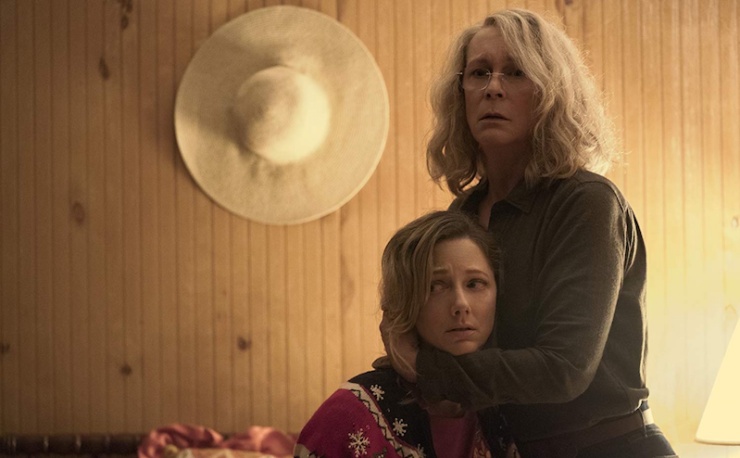The original Halloween isn’t all that scary, except for little moments here and there. Like every time that iconic score starts up, and it gets the heart racing at the same rapid beat. Or when teenager Laurie Strode happens to catch a glimpse of masked Michael Myers just watching her from behind some hanging laundry. These moments, of the killer stalking his prey, are terrifying. But once he actually catches up to her… a lot of the terror just drops away. The trap he lays for her, the way he slowly tracks her to the closet where she’s moaning like a caged animal—these are key horror-movie moments, but they’re experienced at a remove.
That’s due in large part to the fact that it’s never made clear why Michael is so obsessed with Laurie. Her chasteness, her responsibility compared to the horny teenagers shrugging off babysitting to hook up, must certainly fascinate him, considering how he murdered his sister Judith post-sex. And he certainly targets her, with the final grotesque vignette involving her friends’ bodies, clearly designed to drive her to utter hysteria. But why her?
Later (bonkers) installments in the franchise attempted to explain this by having Laurie be Michael’s other sister, to connect them by blood. But the new Halloween (a soft reset of the franchise and direct sequel to the 1978 original) retcons this in such a cheeky, on-the-nose way: Laurie’s granddaughter shrugs off this theory as “That’s just a story someone made up to make themselves feel better.”
There’s never going to be a satisfying answer as to why Michael is obsessed with Laurie, so the filmmakers brilliantly turned it around and made her obsessed with him.
Spoilers for the entire Halloween franchise, including the 2018 reboot.
A lot of the promotion centered on how badass Jamie Lee Curtis looks, cocking a rifle in a tank top, and she is, but Laurie Strode 40 years later is also a woman indelibly shaped by her trauma. The girl who happened to glance up and see Michael now looks for him everywhere. She trembles, she mutters, she self-medicates with alcohol. She has weathered the collapse of two marriages, one of which left her estranged from her daughter Karen (Judy Greer) because of her survivalist upbringing. Had Laurie not been targeted by Michael, she would never have raised her daughter to practice fleeing through the woods, to perfect her killshot, to willingly walk into a bunker as if she weren’t sealing herself into a cage. (It’s not a cage.)
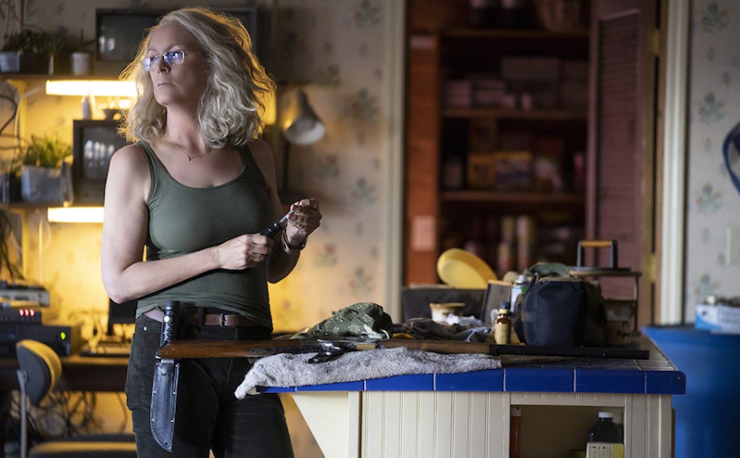
The family Laurie could have had is replaced by intrusive bystanders, wanting to know the Laurie Strode of legend: a pair of British podcasters (another great meta joke) seeking out her compound for answers to questions they already know; local law enforcement who see Laurie as the almost-victim instead of the one who got away. Even her own granddaughter Allyson (Andi Matichak), with whom she has plenty in common despite their distant relationship, begs her to just “get over it.”
Everyone in Laurie’s orbit wants her to give up the ghost already—or, in the case of the podcasters, to actually confront Michael and see if that gets a rise out of the silent, incarcerated slasher. They care about Laurie getting closure only if it fits their narrative, if it neatly ties up the loose ends.
Laurie Strode’s life is nothing but loose ends. She and Karen feebly attempt to stay in each other’s lives, but neither can inhabit the other’s space the way she wants her to: Laurie cannot sit down with family to eat at a restaurant without twitchily glancing for the exits; Karen cannot mask her naked disgust with the compound within which her mother barricades herself. In addition to her lost friends, Laurie will always be haunted by the people who could have inhabited her future: a husband who would be able to support her PTSD, a daughter who didn’t have to be raised to anticipate a masked killer around every corner. Instead, Karen had to be forcibly removed from her care in the hopes of having a “normal” life—and as much as she herself has recovered, with a sensitive husband and promising daughter, she bears her own scars from a childhood rooted in fear and vigilance. All for a man who she’s never met, who has truly become the Bogeyman.
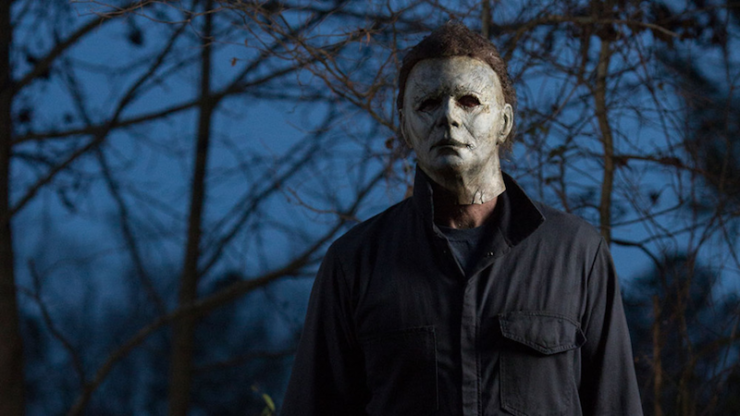
What drives Michael is no longer a necessary question. He’s still coming regardless, wearing his trusty mask and wielding the closest weapon at hand. Instead, the urgent question becomes How do we stop him?
Dr. Sartain has some sort of apex predator theory involving what happens when you put these two figures in the same room together—the desire for this perfect experiment is what propels him to free Michael in the first place. Officer Hawkins thinks that law enforcement will bring Michael down, despite them completely shitting the bed on that the first time around. And Karen’s husband Ray—poor, sweet, well-meaning Ray—just wants to ignore the problem until it goes away. Michael cuts each of them down, disposes of them as distractions on his path to Laurie. The men will not be privy to this final answer.
Buy the Book
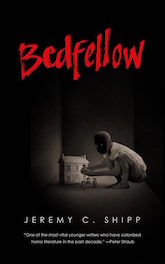

Bedfellow
The only thing that can stop Michael Myers is family.
I know, it sounds laughable, a schmaltzy solution to a horror juggernaut. But no matter how Laurie has been molded into the ultimate survivor, she cannot defeat him alone. Michael is preternaturally resilient, even to having half his hand blown off; plus, he has the size and weight on her. But what he lacks is foresight; his every move is a reaction, seizing whatever slim opportunity gives him the upper hand.
It takes three generations of Strodes to defeat him, and only because of the legacy of his original attack. Laurie knows how to hunt him. Karen outwits him, with her seeming rejection of all of Laurie’s training, only to lure him in. The best moment in the entire movie is when she fake-sobs “I can’t do it, Mommy, I’m sorry!”, prompting Michael to go in for the kill, and Greer’s expression shifts into furious triumph: “Gotcha.” But the final blow belongs to Ally, nearly untouched by Laurie’s trauma yet possessing her grandmother’s street smarts. She’s coming to the story fresh, and is the one to wield Michael’s own weapon—a knife—against him.
However, the greatest expectation they subvert is the bunker itself. “It’s not a cage” is a recurring refrain throughout the movie, despite Karen’s visceral shudders to it, nor the countless times the kitchen island scrapes across the floor to reveal and conceal the entrance. Michael and the viewers both expect that Laurie has caged herself within her own fear, that she can never escape what happened that night.
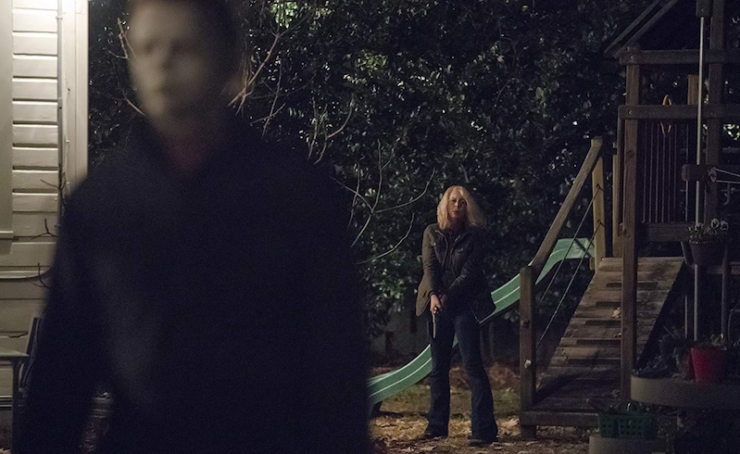
But it’s not a cage. It’s a trap.
Ally doesn’t know, because she didn’t grow up with Laurie. But Karen and her mother planned for this moment, practiced for it, for her entire childhood. Imagine coming of age alongside the ghost of the man who ruined your mother’s life, playing out over and over the impossible scenario in which you actually catch him behind spikes so that you can burn him alive and watch his masked face as he finally, finally dies.
My one frustration with Halloween is that, despite all these beautiful subversions, the filmmakers still succumbed to that tired temptation of giving the killer an escape route. Oddly, this worked a lot better for the Halloween sequels that have now be retconned out of canon; having Laurie decapitate Michael in Halloween: H20, only to open Halloween: Resurrection with the reveal that Laurie accidentally murdered a paramedic with whom Michael switched his clothes is the kind of batty loophole I would expect from Mr. Boddy in the Clue books. When there was no lingering shot on Michael’s charred mask at the end of this Halloween, I knew he got away; I actually didn’t even stay for the post-credits breathing that signaled his survival for the already-in-development sequel. I may just decide that this movie did tie up the loose ends, and as far as I’m concerned, Michael is dead and Laurie got her closure.
The fact that the film ends on the three women cradling each other in the back of a pickup, with a blank Ally still clutching the bloodied knife, implies that she too will be forever changed by her encounter with Michael. The carefree future within her grasp at the start of this Halloween has been tainted by the events of this night; the life she had to claw her way for will not be an ideal one, but it is still a life. And she will have two generations of role models to teach her how to move on after being marked as a Final Girl.
Natalie Zutter had to stop herself from going on a whole tangent about how the climactic scene took place in a kitchen, the center of domesticity. Dissect horror tropes with her on Twitter!










